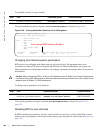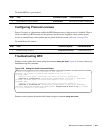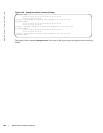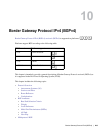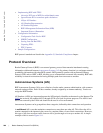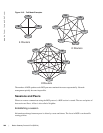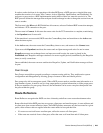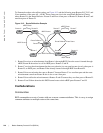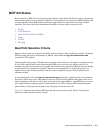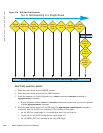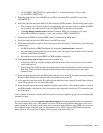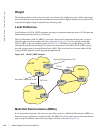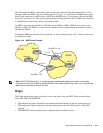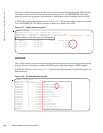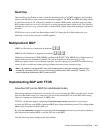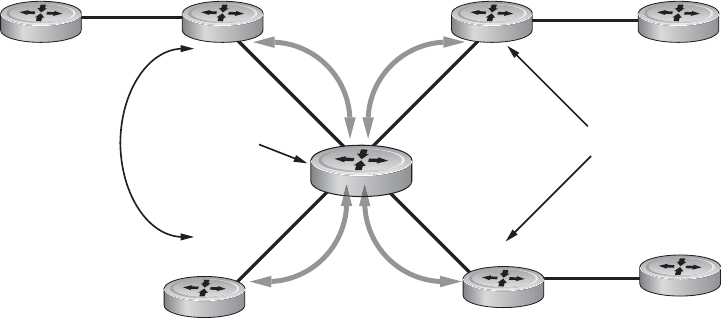
210 | Border Gateway Protocol IPv4 (BGPv4)
www.dell.com | support.dell.com
To illustrate how these rules affect routing, see Figure 10-3 and the following steps.Routers B, C, D, E, and
G are members of the same AS - AS100. These routers are also in the same Route Reflection Cluster,
where Router D is the Route Reflector. Router E and H are client peers of Router D; Routers B and C and
nonclient peers of Router D.
Figure 10-3. Route Reflection Example
1. Router B receives an advertisement from Router A through eBGP. Since the route is learned through
eBGP, Router B advertises it to all its iBGP peers: Routers C and D.
2. Router C receives the advertisement but does not advertise it to any peer because its only other peer is
Router D, an iBGP peer, and Router D has already learned it through iBGP from Router B.
3. Router D does not advertise the route to Router C because Router C is a nonclient peer and the route
advertisement came from Router B who is also a non-client peer.
4. Router D does reflect the advertisement to Routers E and G because they are client peers of Router D.
5. Routers E and G then advertise this iBGP learned route to their eBGP peers Routers F and H.
Confederations
Communities
BGP communities are sets of routes with one or more common attributes. This is a way to assign
common attributes to multiple routes at the same time.
Router A Router B
Router C
Router D
Router E
Router G
Router F
Router H
{
eBGP Route
{
eBGP Route
{
eBGP Route
Route Reflector
Route Reflector Client Peers
iBGP Route
iBGP Routes
iBGP Routes



